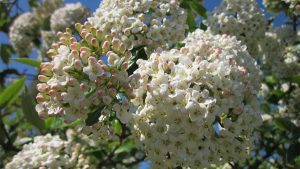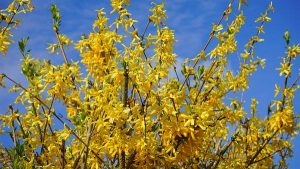Among the many gifts we give and receive over the holidays, my favorites are always the living ones: The poinsettias, the Christmas cacti, the fragrant paperwhite narcissus. The one I’ve always loved best though is the amaryllis. These easy-to-grow bulbs yield gigantic, trumpet-shaped flowers that come in shades of red, orange, pink, peach, white, pale green. There are over 600 named varieties available – including some with striped and variegated blooms. They make beautiful center pieces and bouquets, and they can bloom year after year.
About Amaryllis
The name amaryllis comes from the Greek word for “sparkling.” The flower got its name from the myth of Amaryllis, who fell in love the handsome young shepherd Alteo. He did not return her affection. Amaryllis went to the Oracle of Delphi for guidance, and the Oracle advised her to stand outside Alteo’s house each night and pierce her heart with a golden arrow. Amaryllis did this for 29 nights, and on the 30th night, all the blood she had shed on the path to his door blossomed into beautiful blood-red flowers. She picked a bouquet, and brought them to Alteo, who fell in love with her and her flowers. Her heart was instantly healed, and they lived happily ever after.
The word amaryllis itself is derived from the Greek words for horse and star, which ties nicely into the meanings it holds for us today. The flower became a symbol of strength and determination in the Victorian era, due to its impressive height and sturdiness. It also symbolizes success and is frequently given as a gift to honor an achievement.
Amaryllis became a symbol of the season as the result of the story that St. Joseph’s staff burst into blooms when it was announced that he would be husband of Mary. As a result, the St. Joseph Staff hybrid amaryllis is one of the most popular at Christmas time. It’s also true that the huge red blooms of hybrids like Red Lion fit perfectly into most holiday décor. (There’s even a Christmas Gift hybrid, reflecting how popular these bulbs have become!)
Caring for Amaryllis
Apart from those amazing flowers, the best thing about amaryllis is how simple it is to grow. Indoors, the bulbs can be easily forced into bloom. They don’t even need soil! Here’s how to get the most out of your bulb:
- If your bulb has not already been potted, place it in a 6”- 8” pot.
- We recommend planting in a good quality potting soil. Pack the soil gently around the bulb, leaving about one-third of the pointy end out of the soil. (No soil? You can also plant the bulb in pebbles or small stones, filling a vase or bowl to the top of the stones. You’ll still need to keep one-third of the bulb above the surface, and refill the water when it drops below the line of stones. You may want to pack the stones in around the bulb to keep it anchored.)
- Leave your amaryllis in spot that gets lots of bright, indirect sunlight.
- Water it sparingly. The soil should only ever be slightly moist.
- Depending on the age of your bulb, it will typically take four to six weeks for your amaryllis to start blooming.
- Once it starts, you’ll see stems first, then leaves. A bloom will appear on each stem. Amaryllis will flower for up to eleven weeks. Pro Tip: As the stems start growing, rotate the pot regularly so that different stems get the sunlight. This will ensure the plant grows evenly!
- When your amaryllis is done blooming, cut the stalks down to about an inch from the bulb.
- Continue to water as usual, and occasionally treat it with some houseplant fertilizer.

- Starting in late summer, water the bulb less frequently, and let any leaves that have grown die back.
- When the pot has dried out completely, store the dormant bulb in a cool, dark space for at least eight weeks.
- When you’re ready, repot your bulb and start the process of enjoying your amaryllis all over again!
Amaryllis is an easy way to bring color and joy into your home for the holidays. If you love plants as much as we do at Connecticut Green, we know you’ll enjoy the bright, exuberant display these flowers bring just in time for the holidays!
https://pixabay.com/en/amaryllis-flower-blossom-bloom-red-1860710/





